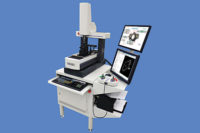
How can a company move forward if it does not know where it is? In general terms, any audit is a snapshot in time of how an organization is complying and performing to a set of requirements. If uncomfortable when hearing the word audit, then ponder this: Some organizations actually request audits-not from their customers but from their internal nondestructive (NDT) inspectors and managers. These companies have a different perspective of an NDT audit. They believe in being proactive, which is the key to not only a successful audit but the foundation of a successful organization.
Many industries use NDT. So, why do many organizations resist doing a self assessment, or audit, and, in the process, miss out on an opportunity for improvement?
When developing an internal NDT audit plan, it is critical to start with a clear objective of what will be measured. Conducting any sort of NDT audit without clear outcomes is a fruitless exercise. Yet, some managers would rather not do any type of internal audit. These same managers have the burn the witch mentality against audits and auditors, which keeps their organizations from going through the process when it can actually do some good.
The word audit can evoke images of terror, in which the auditor is out to find all the things that are wrong with an organization. In this scenario, the auditor will never rest until the guilty are made to pay. Believing that the role of the auditor is to find out what is wrong with a company is only half right.
This is not the correct definition of the word. An NDT audit can bring about improvements, opportunities, cost reductions, better customer service and a competitive edge. One must determine what an audit truly means within an organization. If NDT audits are defined as a painful experience, they will be a painful experience.
Some companies have bodies buried in the back and hope that an audit will not open issues that should remain closed. There are a host of reasons explaining how these bodies got there. For example, negative procedures or informal policies may have been in place before the current NDT inspector arrived on the job. One may not have been aware that the NDT department was doing something incorrectly. Or, the company has the attitude, “Why change the way we’ve been doing things for years?” It can all be traced back to poor management. Regardless of how the situation came about, the auditor will see it as nonconformance and a violation of proper procedures.
Another reason to take a proactive approach to NDT audits is a financial one: the impact of nonconformance to the bottom line of an organization. How much does it cost a company in time and resources to correct something that should have already been done correctly? There also is the loss of credibility in the eyes of the customers.
Depending on the size of an organization and the amount of an NDT inspection being conducted, the cost for a typical correction of an NDT nonconformance can range anywhere from $100 to $25,000. This estimate includes factors such as time, manpower, resources, paperwork, phone calls, conducting a root cause analysis and responding to an outside audit.
What type of nonconformance does one find during an NDT audit? In most cases, findings fall into these categories: inspector performance, inspector qualifications, equipment, calibration and procedures. Typical finding may include:
• Missing signature on the company’s written practice and inspection documents.
• Inspection equipment or tools are out of calibration.
• NDT personnel certifications are not current.
• No or out-of-date inspection procedures.
• Unclear or undefined management or Level III roles and responsibilities.
• Unclear roles and responsibilities for Level I and Level II inspectors.
• No inspection procedures on file.
• Incomplete inspection records and documentation.
Of course, there is more involved than merely finding areas that need correction; it is not enough to say that the problem has been corrected. An audit finding and a root cause analysis go hand-and-hand. In fact, the two complement each other.
Identifying the audit findings is the first part of the process but it is only the beginning. Meaningful audit results can only be realized by conducting a root cause analysis, which will answer two important questions: Why was there a problem to begin with? What has been done to ensure that this problem will not occur again?
Keys to a Successful Audit
When developing an NDT self-audit, consider these principles. First, a company must make sure it is in compliance with the requirements of its customers. Do not make assumptions. Make sure there is a firm understanding of what is required of the NDT program. Companies that rely on outside Level III services often make the mistake of thinking they do not have to get involved with the NDT program. Also, one of the most important points to remember-the employer is responsible for the NDT program.Identify internal resources
Although there is no precise recipe for success, the following audit strategies will streamline the process.Get formal training for people who will be conducting NDT audits. Simply having some auditing experience does not make one a good NDT auditor. An auditor should have a clear understanding of a company’s NDT applications.
Make it clear that all people involved with NDT should have a vested interest in conducting the audit because the results will be used to improve the process, not punish the violators.
Organize a team
This is easy to say, yet difficult to do. Strive to make the self-audit a team-building opportunity.•Designate someone to lead the auditing effort. That leader must communicate the purpose of the internal audit to all parties involved.
•Establish a promotional program for all employees before starting the audit. Let people know that the objective of the audit is to improve as a company.
•Each team member should participate at a different level but all should be committed to the goals of the program.
•Use an audit checklist to assess all NDT areas. If a company does not have a checklist, several are available on the Internet and can be customized to fit a company’s needs.
Create a plan
Develop a written plan to address each situation that an audit reveals as well as strategies designed to continually improve the NDT process. Following are some important elements of a successful plan:• Include target dates for implementation and who is responsible for each step.
• Make the plan easy for all team members to read and follow.
• Build a feedback mechanism so team members can let the team leader know when something is not working.
Organize and document
Keep the following information well organized:• Self-audit notes and decisions.
• Equipment calibration and personnel recertification schedule.
• Product and service supplier contact information.
• Related correspondence and paperwork.
• Notes on progress.
Review the plan on a regular basis. Document all changes in activities, introduction of new activities, glitches or problems, changes to the plan and dates they were implemented.
One of the best ways to survive an NDT audit is to become proactive and do internal audits. Do not wait until the storm has arrived to start thinking about what should be done.
Nondestructive testing requirements, specifications and inspection applications are changing at the speed of light. Add to that trend the changing demographics of NDT inspectors, advances in automation and technology, changing customer expectations, new materials and product designs. This represents only the tip of the iceberg. Companies need to reassess the way they conduct and manage nondestructive testing. A proactive approach to NDT audits is important to maintaining a competitive edge in the marketplace. ndt
Donald P. Blanchette is manager of Hellier Inc., Northeast Operations (Niantic, CT). For more information, call (860) 739-8950, e-mail [email protected] or visit www.hellierndt.com.


